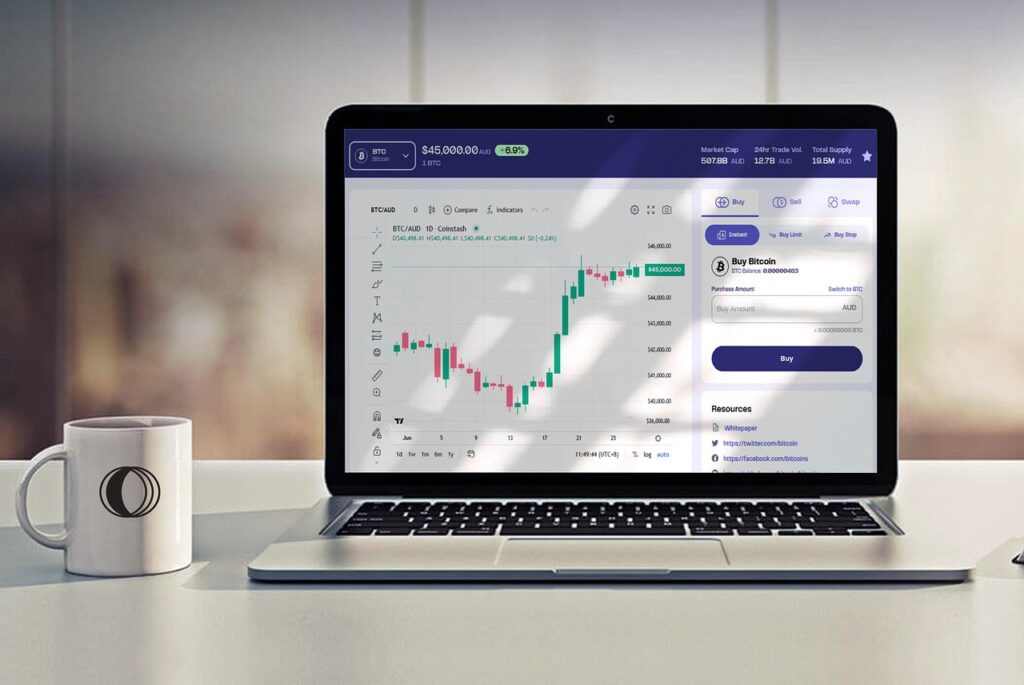cryptocurrency investment tips

Introduction
If you’re thinking about diving into the world of crypto investing, first of all welcome! Cryptocurrency has grown from a fringe technology experiment into a booming asset class with millions of investors worldwide. But let me be real with you: it’s not all sunshine and moonshots. The crypto market is exciting, yes, but it can also be volatile and overwhelming for beginners.
That’s why I put together this detailed guide on cryptocurrency investment tips. Whether you’re brand new to crypto or you’ve dipped your toes in and want to go deeper, these 12 tips will help you navigate the space more confidently and smartly.
1. Understand the Basics of Cryptocurrency
Before you even think about buying your first coin, take time to understand what cryptocurrency is. In a nutshell, crypto is a form of digital money that uses cryptography to secure transactions and operates on decentralized networks called blockchains.
Start with key concepts:
- Blockchain: The technology that powers most cryptocurrencies.
- Coins vs. Tokens: Coins like Bitcoin and Ethereum run on their own blockchains. Tokens are built on top of other blockchains.
- Wallets: These are tools that let you store, send, and receive cryptocurrencies.
A good foundation will save you from many beginner mistakes.
2. Choose the Right Investment Strategy
There’s no one-size-fits-all strategy in crypto investing. You’ll need to decide whether you want to be a long-term holder (aka HODLer) or a short-term trader.
- Long-term investing involves buying and holding crypto for months or years, regardless of market fluctuations.
- Short-term trading means buying and selling crypto frequently to take advantage of price movements.
Most beginners find long-term investing to be less stressful and more rewarding over time, especially since the crypto market can swing wildly.
3. Research Before You Invest
Don’t just follow hype or invest in a coin because a celebrity tweeted about it. You need to do your own due diligence.
Look into:
- The project’s whitepaper: This document outlines the coin’s purpose, technology, and roadmap.
- Team credentials: Who’s behind the project?
- Tokenomics: How is the coin structured? Is there a limited supply?
- Use cases: Does the coin actually solve a real-world problem?
The more informed you are, the better your investment decisions will be.
4. Use Trusted and Secure Platforms
Unfortunately, the crypto world has its fair share of scams. That’s why it’s crucial to choose reputable platforms for buying, trading, and storing your assets.
Look for:
- Well-known exchanges like Coinbase, Binance, or Kraken.
- Two-factor authentication (2FA) as a basic security layer.
- Cold storage wallets (offline wallets) for extra safety.
Do your homework before signing up anywhere or linking your bank account.
5. Set Realistic Goals and Expectations
Everyone dreams of becoming a crypto millionaire overnight, but the truth is, most people don’t. Set practical investment goals and understand that the crypto market is still young and volatile.
Here are a few mindset tips:
- Don’t expect to 10x your money in a week.
- Focus on long-term growth.
- Accept that there will be dips and corrections.
Realistic expectations will help you stay calm and rational in a crazy market.
6. Practice Risk Management
One of the golden rules of investing is: never invest more than you can afford to lose. This is especially important in crypto, where prices can plummet in minutes.
Some basic risk management tips:
- Don’t put all your money into one coin.
- Use stop-loss orders to minimize losses.
- Diversify your portfolio across different projects.
The goal is to protect your capital while still allowing room for growth.

7. Stay Updated with Market News
Crypto is fast-moving. A single tweet, regulation change, or software upgrade can send prices soaring or crashing.
To stay ahead:
- Follow reliable news sources like CoinDesk, CoinTelegraph, and The Block.
- Join Twitter and follow crypto influencers and analysts.
- Set up Google Alerts for key projects you’re investing in.
Being informed helps you react wisely to market events.
8. Learn from the Community
One of the best things about crypto is its passionate and active community. From Reddit to Telegram, Discord to Twitter, you’ll find people discussing strategies, sharing insights, and warning about scams.
Here’s how to plug in:
- Join subreddits like r/CryptoCurrency or r/Bitcoin.
- Participate in Discord channels of your favorite projects.
- Watch YouTube channels that focus on education, not hype.
Just remember: not all advice is good advice. Learn to filter signal from noise.
9. Avoid Common Mistakes
Everyone starts somewhere, and making a few mistakes is just part of the learning curve. But there are some classic blunders that can seriously hurt your crypto journey if you’re not careful. The good news? You can avoid most of them by simply knowing what to watch out for.
FOMO (Fear of Missing Out)
We’ve all been there. You see a coin pumping hard maybe it’s up 200% in a week and suddenly you feel this urgency, like you have to buy in now or you’ll miss the next big thing.
The problem? By the time you feel the FOMO, the pump is usually already near its peak. That’s when many people buy high… and then watch their investment crash shortly after.
Tip: Instead of reacting emotionally, stick to your strategy. Do your research, set entry and exit points, and never chase a green candle just because everyone else is hyped.
Emotional Trading
Crypto can be a rollercoaster—prices rise and fall quickly, sometimes without warning. When that happens, it’s easy to panic-sell during a dip or buy impulsively during a rally.
But emotional trading almost always leads to bad decisions.
Tip: Have a clear plan. Know why you’re investing in a coin, what your goals are, and what price points you’re comfortable buying or selling at. Take a step back during volatility and remember the long game.
Ignoring Fees
Every transaction has a cost. Whether it’s trading on an exchange, moving crypto between wallets, or using a decentralized app, fees can add up fast especially when the network is congested.
If you’re making lots of small trades or constantly shifting between assets, those fees could eat into your profits more than you realize.
Tip: Compare exchange fees before making trades. On the Ethereum network, check current gas fees before sending transactions. And consider batching your trades or using networks with lower fees like Solana, Polygon, or Layer 2 solutions like Arbitrum and Optimism.
Forgetting About Taxes
This one’s a biggie and one that surprises a lot of people.
In many countries, crypto is considered a taxable asset. That means every time you sell, trade, or use crypto for purchases, it can trigger a taxable event.
Ignoring your tax obligations could lead to penalties down the road.
Tip: Track your transactions from the start. Use portfolio trackers or dedicated crypto tax software like Koinly, CoinTracker, or ZenLedger to make tax season easier. And if you’re unsure, speak with a tax professional who understands crypto regulations in your country.
Overleveraging or Margin Trading
Some platforms offer margin or futures trading, letting you borrow funds to amplify your positions. Sounds exciting, right? But it’s also extremely risky.
Many beginners lose their entire balance (or more) through leveraged trading because they don’t fully understand the risks.
Tip: Unless you’re an experienced trader with a solid risk management strategy, stay away from leverage. Crypto is already volatile there’s no need to multiply the risk.
Falling for Scams and Rug Pulls
Scammers love crypto because of the lack of regulation and anonymity. Fake airdrops, phishing sites, pump-and-dump groups, and shady DeFi tokens are all over the place.
If something sounds too good to be true it probably is.
Tip: Never share your seed phrase. Always double-check URLs. Avoid sending funds to unknown wallets or connecting your wallet to suspicious sites. Stick with well-audited projects and platforms with transparent teams.
“All-In” on One Coin
Putting your entire investment into a single coin might feel bold but it’s also reckless.
If that coin crashes, or turns out to be a scam, you could lose everything in one move.
Tip: Diversify. Spread your investments across several well-researched projects. Think of your crypto portfolio like a garden you don’t want to bet your whole harvest on one seed.
No Exit Strategy
Buying is easy but what’s your plan for selling?
Many investors don’t know when to take profits or how to exit responsibly. As a result, they ride coins all the way up… and all the way down again.
Tip: Set sell targets based on your financial goals. For example, you might plan to sell 25% of a coin if it doubles, and another 25% if it triples. You don’t need to sell everything, but taking some profits along the way helps you lock in gains.
Neglecting Fundamentals
Too many investors base their decisions solely on price charts or social media hype, without ever understanding what a project actually does.
Tip: Always go back to the fundamentals. What problem does the project solve? Does it have real-world adoption? Who’s on the team? What’s the roadmap? Solid fundamentals are what separate long-term winners from short-lived pumps.
Assuming Past Performance = Future Gains
Just because a coin skyrocketed in the past doesn’t mean it will do the same again. Markets evolve. Narratives change. Not every coin that mooned in 2021 will do it again in 2025.
Tip: Be cautious with historical comparisons. Instead of chasing yesterday’s winners, look for tomorrow’s innovators with real use cases, active development, and engaged communities., money, and stress.
10. Use Tools and Analytics
IfIf you want to take your investing to the next level, start using tools that provide data-driven insights. Leveraging these tools can help you analyze market trends, evaluate token fundamentals, and optimize your portfolio performance.
Popular tools include:
- CoinMarketCap and CoinGecko for tracking real-time prices, market caps, historical data, and trending tokens.
- TradingView for technical analysis, chart patterns, indicators, and user-generated trading ideas.
- DeFi Llama to explore TVL (Total Value Locked) across DeFi protocols and monitor where capital is flowing in decentralized finance.
- Portfolio trackers like CoinStats, Delta, or Zerion to get a consolidated view of your holdings, including performance metrics and gain/loss tracking.
- Glassnode or IntoTheBlock for on-chain analytics such as whale activity, exchange inflows/outflows, and wallet behavior.
- Messari for in-depth research, token metrics, and industry news.
These tools don’t just give you numbers they offer insight. Using analytics wisely can help you make more informed decisions, reduce emotional trading, and identify both opportunities and risks before the broader market reacts.
11. Secure Your Investments
Crypto is self-custodial. That means you are responsible for keeping your assets safe.
Best security practices:
- Use hardware wallets like Ledger or Trezor.
- Never share your private keys or seed phrases.
- Double-check URLs before logging in anywhere.
- Beware of phishing emails and fake apps.
- Regularly update your devices and apps to patch vulnerabilities.
- Use a password manager to create and store complex, unique passwords.
- Enable biometric or PIN protection on your crypto apps.
- Avoid accessing wallets on public Wi-Fi networks.
Think of your crypto like digital cash. If someone gains access to your private keys, it’s like handing them your wallet with no way to get it back. Security is not optional in crypto; it’s an absolute must.
12. Keep a Long-Term Perspective
Lastly, always zoom out. The crypto market has been through multiple boom-and-bust cycles. If you look at the long-term trajectory, it’s one of growth, innovation, and increasing adoption.
Here’s why patience pays:
- Many early adopters who held Bitcoin through multiple crashes are now millionaires.
- Projects like Ethereum went from $0.30 to over $3,000+.
- New and upcoming technologies like layer 2 solutions, real-world asset tokenization, and decentralized identity platforms are still in early stages and could follow similar growth paths.
- Dollar-cost averaging (DCA) over time generally outperforms trying to time the market.
- Institutional interest is increasing, with companies and governments exploring digital assets.
- Regulation is gradually creating safer and more structured environments for retail investors.
Real wealth in crypto is rarely made by jumping on trends it’s built by being steady, informed, and committed over time.
So instead of chasing the next meme coin or obsessively checking prices, focus on learning, diversifying, and growing your investments slowly. Compound interest, smart choices, and time in the market will always beat quick wins followed by panic losses.

Conclusion
There you have it 12 solid cryptocurrency investment tips to help you navigate this wild but exciting world. The key takeaways? Educate yourself, stay secure, manage your risks, and keep a cool head. Crypto investing isn’t a guaranteed way to get rich, but with the right mindset and tools, it can be a smart addition to your financial strategy.
As always, never invest money you can’t afford to lose, and continue learning every step of the way. The world of crypto moves fast, but if you take your time and build your knowledge, you’ll be in a great position to make informed, strategic investments. see


